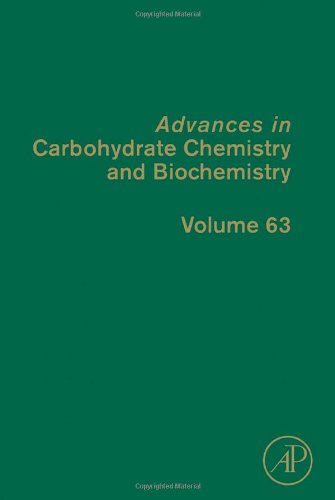

Most ebook files are in PDF format, so you can easily read them using various software such as Foxit Reader or directly on the Google Chrome browser.
Some ebook files are released by publishers in other formats such as .awz, .mobi, .epub, .fb2, etc. You may need to install specific software to read these formats on mobile/PC, such as Calibre.
Please read the tutorial at this link: https://ebookbell.com/faq
We offer FREE conversion to the popular formats you request; however, this may take some time. Therefore, right after payment, please email us, and we will try to provide the service as quickly as possible.
For some exceptional file formats or broken links (if any), please refrain from opening any disputes. Instead, email us first, and we will try to assist within a maximum of 6 hours.
EbookBell Team

4.4
82 reviews
ISBN 13: 9780123808561
Author: Derek Horton
Since its inception in 1945, this serial has provided critical articles written by research specialists that integrate industrial, analytical, and technological aspects of biochemistry, organic chemistry, and instrumentation methodology in the study of carbohydrates.
Chapter 1: Roger W. Jeanloz
References
Chapter 2: Bengt Lindberg
Chapter 3: Zeolites and Other Silicon-Based Promoters in Carbohydrate Chemistry
I. Introduction
II. Zeolites, Clays, and Silica Gel as Heterogeneous Catalysts and Their Use in Organic Synthesis
III. Catalysis of Key Transformations in Carbohydrate Chemistry
1. Glycosylation
2. Sugar Protection and Deprotection
3. Hydrolysis/Isomerization of Saccharides and Glycosides
4. Dehydration
5. Oxidation
6. Other Synthetic Applications
IV. Conclusion
References
Chapter 4: Tools in Oligosaccharide Synthesis: Current Research and Application
I. Introduction
II. Modified Enzymes and Substrates
1. Glycosidases, Glycosynthases, Thioglycosidases
2. Glucansucrases
3. Fructansucrase Enzymes
4. Sucrose Analogues
5. Oligo- and Poly-saccharide Synthesis with Sucrose Analogues
6. Sucrose Isomerase
III. Commercial Products
Acknowledgments
References
Chapter 5: Multivalent Lectin-Carbohydrate Interactions: Energetics and Mechanisms of Binding
I. Introduction
II. Mucins: Background
III. Binding of Lectins to Mucins
1. Affinities of SBA and VML for Mucins
2. Thermodynamics of SBA Binding Tn-PSM
3. Thermodynamics of SBA Binding 81-mer Tn-PSM
4. Thermodynamics of SBA Binding 38/40-mer Tn-PSM
5. Thermodynamics of SBA Binding Fd-PSM
6. Thermodynamics of VML Binding Tn-PSM
7. Thermodynamics of VML Binding 81-mer Tn-PSM and 38/40-mer Tn-PSM
8. Thermodynamics of VML Binding Fd-PSM
IV. Mechanisms of Binding of SBA and VML to PSM: The Bind and Jump Model
V. Thermodynamics of Lectin-Mucin Crosslinking Interactions
1. Hill Plots Show Evidence of Increasing Negative Cooperativity
2. Analysis of the Stoichiometry of Binding of SBA to the Mucins
3. Crosslinking of Lectins with the Mucins Correlate with Decreasing Favorable Entropy of Binding
VI. Conclusions and Perspective
1. The Bind and Jump Model for Lectin–Mucin Interactions
2. Implications of Increasing Negative Cooperativity and Decreasing Favorable Binding Entropy of Lec
References
Chapter 6: Design and Creativity in Synthesis of Multivalent Neoglycoconjugates
I. Introduction
1. Multivalency: Definition and Role
2. Multivalency in Protein–Carbohydrate Interactions
3. Synthesis and Applications of Multivalent Glycoconjugates
II. Glycoclusters
1. Glycoclusters from Branched Aliphatic Scaffolds
2. Glycoclusters from Branched Aromatic Scaffolds
3. Glycoclusters from Carbohydrate Scaffolds
4. Glycoclusters from Peptide Scaffolds
5. Other Glycoclusters
III. Glycosylated Carbon-Based Nanostructures
1. Glycofullerenes
2. Glyconanotubes
IV. Multivalent Glycoconjugates by Self-Assembly
1. Self-Assembly Using Coordinating Metals
2. Self-Assembly of Glycodendrons in Solution
V. Glycodendrons and Glycodendrimers
1. Introduction
2. Glycodendrons
3. Glycodendrimers
VI. Conclusion
carbohydrate chemistry answer key
advanced carbohydrate counting
2 carbohydrate
2 carbohydrate functions
2.3 carbohydrates and lipids answers
Tags: Derek Horton, Carbohydrate, Chemistry